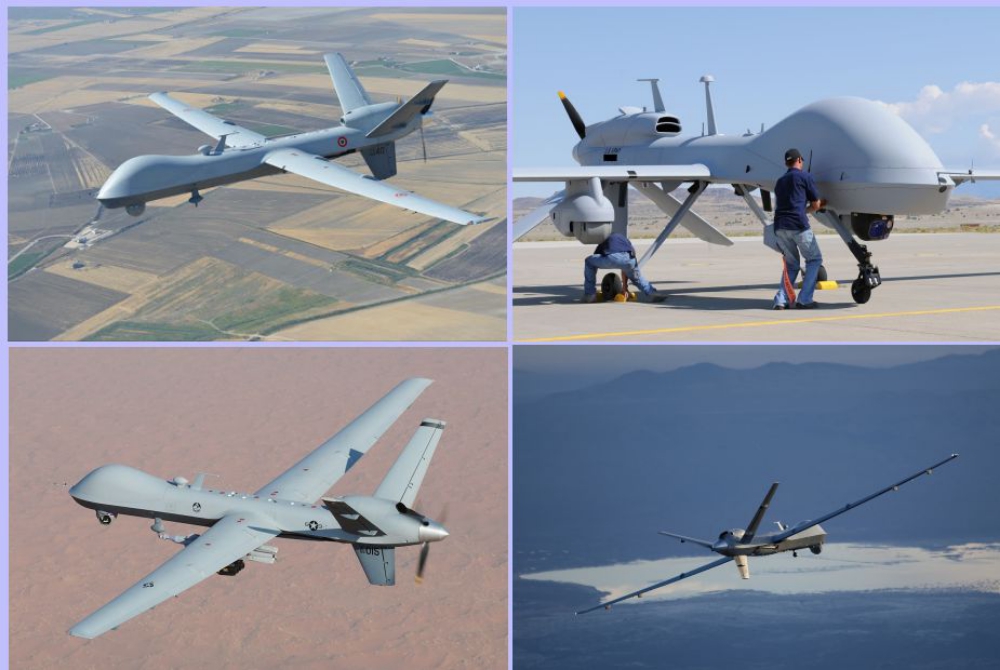 General Atomics Aeronautical System (GA-ASI)
General Atomics Aeronautical System (GA-ASI)
presents its full range of unmanned aerial systems and solutions at UMEX 2020, the International Unmanned Defense Systems that takes place in Abu Dhabi, UAE (United Arab Emirates).
The company is dedicated to providing long-endurance, mission-capable aircraft with the integrated sensor and data link systems required to deliver persistent situational awareness and rapid strike capabilities. GA-ASI provides pilot training, support services for RPA field operations, and manufactures a variety of state-of-the-art ground control stations.
It also focuses on providing integrated sensor payloads and software for Intelligence, Surveillance and Reconnaissance (ISR) aircraft platforms and develops high energy lasers, electro-optic sensors, and meta-material antennas. Established in 1992, GA-ASI is leading the industry to new levels of performance, reliability and operational capability for RPA. GA-ASI aircraft have flown in excess of six million flight hours, and the company has expanded the acceptance and application of RPA systems around the world.
The company has delivered more than 900 aircraft in its more than 25 year history. GA-ASI’s RPA family includes a variety of aircraft, such as Predator B/MQ-9 Reaper, Gray Eagle, Predator C Avenger, Predator XP, and the new MQ-9B SkyGuardian and SeaGuardian.
Recently, General Atomics Aeronautical Systems, Inc. (GA‑ASI) has successfully ground tested its Airborne Laser Communication System (ALCoS) by establishing a link with a satellite in Geo-synchronous Earth Orbit (GEO). GA-ASI conducted the test with Tesat-Spacecom (TESAT), the leader of space-based laser communication (lasercom), using their GEO Laser Communication Terminal (LCT), the LCT 135. This was the first demonstration of an air-to-space lasercom system with Size, Weight and Power (SWAP) that is compatible with a Medium-altitude, Long-endurance (MALE) Remotely Piloted Aircraft (RPA).
GA-ASI tested the ALCoS from an optical observatory located on Tenerife in the Canary Islands and closed link with TESAT’s LCT 135 terminal onboard the GEO satellite Alphasat. The test successfully demonstrated acquisition and tracking, and sufficient power to close the link with the LCT 135. GA-ASI is completing the development of the flight system for use on a GA-ASI-produced MQ-9 RPA.
“This test was a critical step towards enabling our aircraft with a high-bandwidth communication system that cannot be jammed or detected by an adversary,” said Linden Blue, CEO, GA-ASI. “ALCoS allows a new generation of high-performance sensors by breaking the data bottleneck of current RF SATCOM technology.”
ALCoS is the result of a five-year, GA-ASI-funded effort to deliver Low Probability of Intercept (LPI), Low Probability of Detect (LPD) communications link to the MQ-9. With 300 times the data carrying capacity of conventional RF SATCOM systems, ALCOS will be able to operate as a gateway to the Joint Aerial Network for forward-deployed forces.
The system has the capability to work in two optical wavelengths, 1064nm and 1550nm. TESAT brings more than 12 years of experience with deployed lasercom systems for space. TESAT’s LCT 135 terminals are currently in use on seven satellites in orbit. These LCTs make over 60 satellite-to-satellite links over a distance of 45,000 km per day and have logged over 30,000 links total. TESAT has proven the commercial viability of laser satellite communications.
Source: Army Recognition
